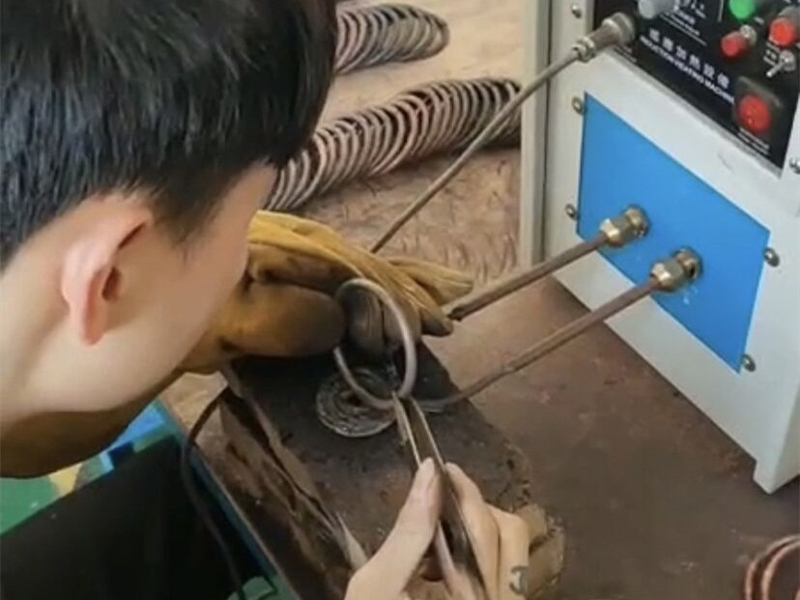Application Case: high frequency induction heater for copper/silver/gold jewelry brazing.
High frequency induction heater is also widely used for high frequency brazing process of aluminum tubes, copper tubes and stainless steel tubes etc. Often choose high power than 15kw.
1, High Frequency Brazing Process for Aluminum Tubes
It’s difficult in some degree for high frequency induction heater to weld aluminum tubes, because the part’s surface has no color change. We must pay attention to the control of welding temperature. The melting point of aluminum materials is around 660C degrees, so we often connect high frequency induction heater with an infrared temperature controller to control the heating temperature no more than 400C degrees.
2, High Frequency Brazing Process for Copper and Brass Tubes
We have achieved success in welding copper tubes and brass tubes with high-frequency power sources as early as 2003. The welded tubes have been tested by techniques such as pressing, reaming, and biasing, and they are all qualified products. .
3, High Frequency Brazing Process for Steel Pipes
High frequency induction heater for welding of steel pipes has been widely used in China and has developed into a huge welded pipe industry.

Advantages of High Frequency Welding
1. Good welding quality of the metal parts like tubes or rings.
2. High production efficiency, heating temperature rise up very quick.
3. We often use silver or copper brazing materials for high frequency induction heater to do welding, which can save brazing material’s cost.
4. Good working conditions, easy operation steps.
5. Easy to realize mechanization and automation.
Disadvantages of High Frequency Brazing
1. There is still a lack of reliable non-destructive testing methods
2. The costs of the whole set of high frequency induction heater add mechanization and automation are not cheap.
3. The size, shape and thickness of the work-pieces are limited.
4. The lap joint increases the weight of the component and the tensile fatigue strength of the joint is lower than that of the butt joint.
